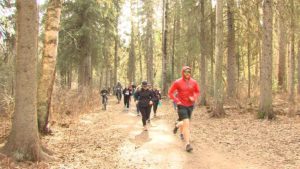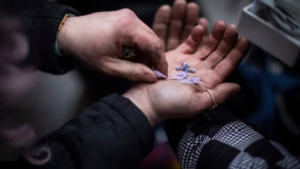Nel Wieman and Unjali Malhotra call for a “two eyed seeing” approach to healthcare, informed by both Indigenous and biomedical knowledge
In Canada, genocidal policies and systems have devastated Indigenous peoples’ determinants of health.1 For example, as a consequence of the Indian Reserve System many Indigenous peoples live in isolated areas with limited or no access to healthcare, education, or employment opportunities.2 Furthermore, the colonial legacy of anti-Indigenous racism is prevalent across Canada, including its healthcare systems, so many Indigenous people fear accessing healthcare services.34
One way to make healthcare more equitable and effective for Indigenous peoples is to incorporate their knowledge, beliefs, values, practices, medicines, and models of health and healing alongside those of western medicine in delivering healthcare. Known as “two eyed seeing,” this approach to healthcare sees from one eye with the strengths of Indigenous knowledge and ways of knowing, and from the other eye with the strengths of western knowledge, respectfully embracing both.5 Two eyed seeing acknowledges that Indigenous methods and treatments are as valid as those used in mainstream medicine, and it allows Indigenous peoples to be partners in their own healthcare (video 1).
At the First Nations Health Authority (FNHA) we advocate for and use the two eyed seeing approach in our work to improve healthcare programmes, services, and health outcomes for First Nations people in the province of British Columbia.6 First Nations are one of three groups of Indigenous peoples in Canada.7 The FNHA is the first health authority of its kind in Canada and serves as a model for the other provinces.8
“Culture is medicine”
We promote and support Indigenous cultural practices and activities in our programmes and services, as we believe that they are integral to the self-care and health of Indigenous peoples and are “good medicine.” In fact, common sayings among Indigenous peoples include “culture saves lives,” “culture is medicine,” and “ceremony is medicine.”
We also regularly provide wellness grants9 to communities to support Indigenous cultural practices and activities, which include the harvesting, preparation, and use of traditional medicines and talking circles (also known as sharing or healing circles).10 Talking circles incorporate different practices and ceremonies, including storytelling, traditional songs, dance, and drumming, as well as smudging (burning of herbs and grass), sweat lodges, and cold water baths. Traditional land and water based activities are also practised, including fishing, hunting, harvesting, and eating traditional foods.
We have found that incorporating these practices into healthcare services and programmes for Indigenous people, and promoting or prescribing them for the purpose of self-care, helps improve Indigenous peoples’ health outcomes. For example, at FNHA funded overdose prevention sites,11 physicians work alongside trained First Nations elders (traditional teachers or knowledge keepers) who lead talking circles,12 share teachings, or provide counselling, smudges, and sweats.
Indigenous clients have reported that the two eyed seeing approach has greatly helped with their healing journeys by giving them a much needed sense of belonging and reconnecting them with Indigenous culture. Many were forcibly disconnected from their families, communities, and cultures by genocidal policies and systems such as the Indian Residential School System and the Sixties Scoop,1314 and they were subjected to severe racism and discrimination. Being able to access safe spaces that uphold a holistic model of care allows Indigenous people to better navigate these traumatic experiences and the intergenerational trauma that comes with having parents who were abused.15
Our “Healing Indigenous Hearts” support groups for people whose loved ones have died because of the toxic drug poisoning crisis are also conducted as sharing circles, where trained facilitators are encouraged to incorporate Indigenous knowledge and medicines alongside western models of grief support.16
Building trust through conversations
When we wanted to bring self-screening for human papillomavirus (HPV) into a First Nations community to make cervical smears more accessible, we co-hosted a talking circle to explain what we were doing and to ask for permission. This was an important project, as many First Nations women live in isolated communities and have had traumatic experiences with the healthcare system, including forced and coerced sterilisation.17 Because of this they are screened for HPV at much lower rates than non-Indigenous women, resulting in higher cervical cancer rates and poorer health outcomes.18 Community members who participated said that they felt empowered and respected by the talking circle, and this approach built their trust in healthcare providers and the self-screening programme.
Indigenous peoples have a strong oral tradition, so we respectfully listen to what they share and to their calls for change. For example, in the HPV project we had conversations with women in the community who had experienced forced and coerced sterilisation, documenting their stories. In response to their accounts, and because informed consent in healthcare is an ongoing priority, we co-developed a revised consent form and processes.19 These can also be used in conversations with patients about informed consent for contraception.





